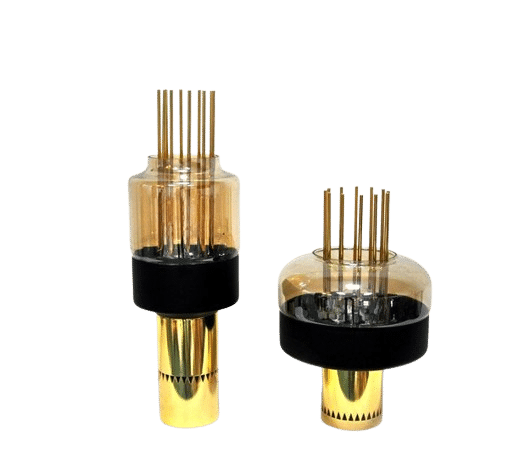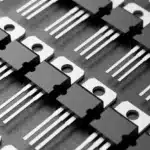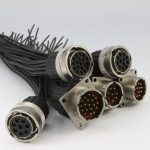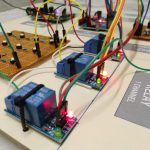
Introduction
Metal-Oxide-Semiconductor Field-Effect Transistors (MOSFETs) are a cornerstone of modern electronics, serving as critical components with outstanding amplification capabilities in everything from microprocessors to audio amplifiers. One of the fundamental MOSFET amplifier configurations is the common-source (CS) amplifier. Understanding the basics of how these amplifiers work, their configurations, and their characteristics can provide a solid foundation for both students and professionals in the field. This article overviews the basics of MOSFET common-source amplifiers, covering their operation, benefits, characteristics, and practical applications.
Introduction to MOSFETs
Before delving into common-source amplifiers, let’s understand the basics of MOSFETs. MOSFETs are a type of field-effect transistor that can function as a switch or amplifier, staple in creating smaller, faster, and more efficient electronic devices today. These voltage-controlled devices have three terminals: the gate (G), the drain (D), and the source (S). The applied voltage to the gate controls the current flow between the drain and source, making MOSFETs highly efficient for electronic signal modulation.
What is a Common-Source Amplifier?
A common-source amplifier is a basic and one of the most widely used MOSFET power amplifier configurations where the source terminal is common to both the input and output circuits. This configuration is analogous to the common-emitter amplifier in bipolar transistor circuits. The main feature of the common-source amplifier is its ability to provide voltage amplification, making it a popular choice for analog circuit design and applications that require amplification, such as audio amplifiers, signal processing, and sensor interfaces.
Exploring Common-Source Amplifier’s Basic Operation
The operation of a common-source amplifier can be broken down into three regions: cutoff, saturation, and triode (or linear) region. In a common-source amplifier, the MOSFET operates in the saturation region where an input signal is applied to, and the output is taken from the drain terminal. The source terminal is grounded or connected to a fixed bias voltage, establishing a common reference point for both the input and output. The voltage exerted on the gate controls the conductivity of the MOSFET, thereby modulating the output signal at the drain in response to the input signal.
Advantages of MOSFET Common-Source Amplifiers
MOSFET common-source amplifiers are widely used in electronic circuits for their numerous advantages, such as:
- High Input Impedance: The high input impedance minimises the loading on the previous stage, preserving signal integrity.
- Versatility: Suitable for a myriad of applications, from audio amplification to signal processing in communication systems.
- Robust Efficiency: MOSFETs operate with lower power consumption compared to other transistor types, making common-source amplifiers energy-efficient.
Unlocking the Circuit Configuration of CS Amplifiers
A typical common-source amplifier MOSFET circuit includes the MOSFET, biasing resistors, and a load resistor connected to the drain terminal. The biasing resistors are crucial for setting the operating point of the MOSFET to ensure it operates in the desired region (usually the saturation region for amplification purposes). The load resistor transforms the variations in current through the MOSFET into voltage changes, creating an amplified output signal.
Special Characteristics of MOSFET Common-Source Amplifiers
Several key characteristics define the performance of MOSFET common-source amplifiers, including:
Voltage Gain
The voltage gain (A_V) of a common-source amplifier is one of its fundamental characteristics. It is defined as the ratio of the output voltage change to the input voltage change. The gain depends on the MOSFET’s transconductance (g_m) and the load resistor (R_D). Typically, common-source amplifiers can provide significant voltage gain, making them suitable for various amplification tasks.
Input and Output Impedance
The gate-source capacitance and the gate resistance primarily determine the input impedance of a common-source amplifier. Since the gate of a MOSFET is insulated from the channel, common-source amplifiers have high input impedance, which is beneficial when interfacing with high-impedance signal sources.
Conversely, the output impedance is mainly influenced by the drain-source resistance of the MOSFET and the external load resistor. Design considerations often aim to optimise these impedances to match with other circuit components or systems.
Frequency Response
The frequency response of common-source amplifiers varies with the design and external components. Generally, these amplifiers exhibit good performance over a wide frequency range but may require compensation or specific design tweaks to handle very high frequencies due to parasitic capacitances and inductances.
Practical Applications and Importance of Common-Source Amplifiers
MOSFET common-source amplifiers are applicable in numerous applications, including audio amplifiers and radio frequency (RF) amplifiers, and they are used as building blocks in integrated circuits. Their ability to provide high voltage gain and drive capability makes them indispensable in electronic design. Some typical applications include:
- Audio Electronics: For preamplifying audio signals before further processing or amplification.
- RF Circuits: As part of oscillators or mixers in RF communication systems.
- Sensor Signal Conditioning: Amplifying low-level signals from sensors before digital conversion or further processing.
Bottom Lines
The MOSFET common-source amplifier is a fundamental building block in electronics, prized for its simplicity, high input impedance, and substantial voltage gain. Whether for audio amplification, RF processing, or signal conditioning, these amplifiers offer a reliable solution for enhancing signal strength with minimal distortion. Understanding its operation, characteristics, and applications allows designers to effectively incorporate it into more complex circuits and systems, enhancing signal processing and amplification capabilities across a broad spectrum of electronic devices.





















